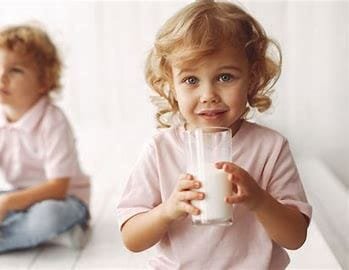Advantages and disadvantages of packaged milk for children
Milk has remained the most consumed beverage in the diet of most children for decades and has been considered to be an important source of some vital elements, including calcium, vitamin D, and protein. Modern packaging and technologies have made milk available in any number of forms: packaged or “pack milk,” pasteurized, sterilized, and sealed into containers to assure durability and ease of distribution. Conveniently and often fortified, such milk does have disadvantages that must be weighed against its advantages, especially in terms of the dietary requirements of children. This article will discuss the pros and cons of packaged milk for children.

Pros of Packaged Milk in Children
1. Convenience and accessibility
One of the best features of packaged milk is convenience. In today’s fast life, most parents are often unable to maintain a steady supply of fresh, unpasteurized milk. Packaged milk, available in cartons, bottles, or pouches, can be easily stored and transported, making it perfect for busy families. Packaged milk is obtainable both in cities and villages. Thus, the availability of packaged milk as a regular supply of milk to a child shall be increased with less possibility of spoilage or contamination.
2. Longer shelf life
Generally, packaged milk undergoes treatments such as pasteurization that heats milk so as to kill the bacteria that can harm them or ultra-high-temperature processing, which extends its shelf life significantly. If not opened, UHT milk has a months shelf life and does not need refrigeration. It is, therefore, convenient for families that do not enjoy immediate access to refrigeration or fresh milk. The packaged milk can be stored in bulk and thus not cause much of a worry to parents as it does not go bad very soon, giving children a nutritious option at all times.
3. Fortification with essential nutrients
Many packaged milk brands also come along with other nutritional supplements like vitamin D and calcium that help in the growth of developing bones in children. This sort of enrichment, therefore, ensures that the few diverse diets received by children provide basic nutrients required for healthy growth. Some regions package milk that is fortified with iron, iodine, and further vitamins, increasing the richness of the product for developing children.
4. Hygiene and Sanitation
Packaged milk undergoes quality control and safety measures, which will ensure that the milk does not contain harmful bacteria, pathogens, or other contaminants in the product. These are essential in relation to children because food-borne illnesses will affect them more readily. Packaged milk is sealed up in sterile containers in order to minimize the risks of contamination, especially in places where clean water and sanitation do not exist. This means parents can get well-fed assurance that their children are receiving the best milk.

5. Choices
Bottled milk is available in several types; these include full milk, low-fat milk, skim milk, and lactose-free milk, depending on the choice and needs of the buyers. For instance, children suffering from intolerance to lactose can get many benefits from milk, thus ensuring that they do not miss out on any necessary nutritional element.
Harmful Effects of Packaged Milk on Children
1. Depletion of natural nutrients
Pasteurization or ultra-high temperature treatment to kill harmful bacteria renders some natural nutrients in milk—one of the issues with packaged milk. Degradation of certain vitamins, including vitamin B12 and vitamin C, and beneficial enzymes in raw milk result from a high heat treatment procedure. Now, through fortification, some of these nutrients added to the packaged milk compensate for this loss; still, the nutritional profile in packaged milk is somewhat lesser compared to freshly processed milk.
2. Possible additives and preservatives
It is natural for milk products to be in the commodity and include additives or preservatives for them to stay fresh and have tastier flavors. These additives, though safe and wholesome for consumption, are not particularly helpful when overingested by children. An example of sweetened milk might be associated with too much sugar consumption, though when not properly managed, it results in problems of the teeth or excessive weight gain. Moreover, other parents would desire their children to consume milk as naturally as possible without any artificial additives.
3. Environmental Issue
Packaging materials employed for milk, such as single-use cartons, plastic bottles, and pouches, have wreaked havoc with the environment. While most packing materials are recyclable, many families do not gain access to facilities for the recycling process, thereby increasing the volume of waste. Environmental costs linked with the production of packaged milk include production, transportation, and disposal. How can children learn about sustainability while consuming products that create ecological problems?
4. Higher Cost:
It’s quite a bit more expensive compared to fresh milk from a local dairy farm, especially when it’s fortified or organic—it’s pricier, partly because processing and packaging add costs. In the long run, budget-strained families will also find the regular purchase of packaged milk a cost. It may lead to lesser intakes of milk by the children or, worse, shift them towards cheaper and less healthy options.
5. Taste and texture
Most children would abhor the taste and texture of packaged milk compared to fresh milk. The high-temperature treatment of UHT milk also gives a detectable “cooked” flavor. Such an altered taste may also make children averse to taking as much milk as they should for their daily nutrition. In addition, the creaminess or texture of packaged milk is not comparable to many types of fresh milk and is another drawback to liking milk in children.
Conclusion
Packaged milk has a number of advantages, particularly related to convenience, safety, and availability, that make it a good choice for families with children. It has further appeal, especially for kids living in areas where diet diversity might be limited, as it strengthens essential nutrients like calcium and vitamin D. Nevertheless, there are some drawbacks to think about: it loses some natural nutrients from processing, has additives, brings environmental worries, and costs more.
Key is maintaining balance for parents. Packaged milk can be an important part of a child’s diet if, through location or economic status, one cannot use only fresh milk safely. But when practical, the packaged milk should be selected that is as minimally processed as possible, contains few additives, and has environmental responsibility as part of its philosophy. Monitoring portion sizes and ensuring that children consume a variety of foods also helps provide comprehensive nutrition, for milk to be just part of a healthy diet.




